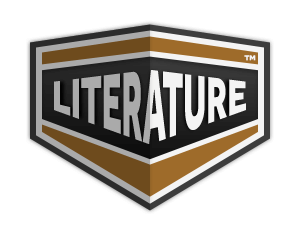About Silk
"About Silk" by Elizabeth Gordon is a comprehensive exploration of silk, delving into its history, production methods, and cultural significance. The book offers insights into the art of silk making, discussing both traditional craftsmanship and modern practices. With vibrant illustrations and detailed narratives, Gordon invites readers to appreciate the intricate processes behind this luxurious fabric, as well as its role in fashion, trade, and cultural expression throughout the ages.
“This is a piece of Sister’s new silk dress,” said the boy named Billy. “It looks as though the fairies had woven it out of cobwebs.” “It was made by something more wonderful than fairies, if that is possible,” said Somebody. “It was spun by a queer little worm who needed it for his own slumber robe, and had no idea in the world of giving it to sister for a party dress.” “You mean the silk-worm’s cocoon, of course,” said the boy named Billy. “About 4,500 years ago there was a Chinese Empress whose name was Si-Ling-Shi, who used to spend a great deal of time in her garden, and as she loved Nature very much she became interested in the worms who lived on her mulberry trees. There were so many of them, and the thread they spun was so strong and beautiful that she thought if it could be unrolled without being tangled or broken it could undoubtedly be spun into a web. “She knew if the chrysalis were left alive to emerge the thread would be broken and spoiled, so she had some of the cocoons devitalized and experiments proved her theories correct. “The rest of the world tried hard to induce China to give their secret of silk-making but to no avail, so the Emperor Justinian sent some young monks to China to study and to get the secret. After some years they went back to Constantinople with enough eggs of the silk-worm butterfly in their hollow pilgrim staffs to begin raising them. “But even after they had the eggs it was not easy to raise them as the children of Mr. and Mrs. Bombyx Mori can only be raised where the mulberry tree will grow.” “After they get the cocoons how do they get the silk unwound?” asked the boy named Billy. “That’s interesting,” said Somebody. “I had a chance to see the process at the Panama Pacific Fair. When the worm is ready to spin, and has shed his coat four times, he is about three weeks old. Then he hangs himself on the limb of the tree which has nourished him, and begins to spin. He moves his head around for three whole days, spinning two threads at the same time, until he is completely covered, when he stops spinning and starts to transform. He has spun about 1,200 yards of double-threaded silk. Of course he must not live to emerge so after three or four days he is put in a gently heated oven until he is dead. Then he is immersed in hot water and stirred with a long-handled brush until the ends of the threads are loosened, when he is put into another pan of hot water with several other cocoons and the ends of the threads are passed through an eyelet to keep them from tangling and are wound upon spools or reels into pale golden skeins of what is called raw silk. Afterward it is bleached and colored and woven into webs,” said Somebody. “That’s got any fairy story beaten a mile,” said Billy. “I’d really like to try out that process with Lady Luna’s cocoon, but she is such a beauty after she comes out that it would be too bad to destroy her.” “Indeed it would,” said Somebody, “and we’ve got to have beauty as well as utility in this world, Billy.” “Sure,” said Billy grinning, but he understood.
Translation
Translate and read this book in other languages:
Select another language:
- - Select -
- 简体中文 (Chinese - Simplified)
- 繁體中文 (Chinese - Traditional)
- Español (Spanish)
- Esperanto (Esperanto)
- 日本語 (Japanese)
- Português (Portuguese)
- Deutsch (German)
- العربية (Arabic)
- Français (French)
- Русский (Russian)
- ಕನ್ನಡ (Kannada)
- 한국어 (Korean)
- עברית (Hebrew)
- Gaeilge (Irish)
- Українська (Ukrainian)
- اردو (Urdu)
- Magyar (Hungarian)
- मानक हिन्दी (Hindi)
- Indonesia (Indonesian)
- Italiano (Italian)
- தமிழ் (Tamil)
- Türkçe (Turkish)
- తెలుగు (Telugu)
- ภาษาไทย (Thai)
- Tiếng Việt (Vietnamese)
- Čeština (Czech)
- Polski (Polish)
- Bahasa Indonesia (Indonesian)
- Românește (Romanian)
- Nederlands (Dutch)
- Ελληνικά (Greek)
- Latinum (Latin)
- Svenska (Swedish)
- Dansk (Danish)
- Suomi (Finnish)
- فارسی (Persian)
- ייִדיש (Yiddish)
- հայերեն (Armenian)
- Norsk (Norwegian)
- English (English)
Citation
Use the citation below to add this book to your bibliography:
Style:MLAChicagoAPA
"About Silk Books." Literature.com. STANDS4 LLC, 2025. Web. 22 Feb. 2025. <https://www.literature.com/book/about_silk_5168>.








Discuss this About Silk book with the community:
Report Comment
We're doing our best to make sure our content is useful, accurate and safe.
If by any chance you spot an inappropriate comment while navigating through our website please use this form to let us know, and we'll take care of it shortly.
Attachment
You need to be logged in to favorite.
Log In